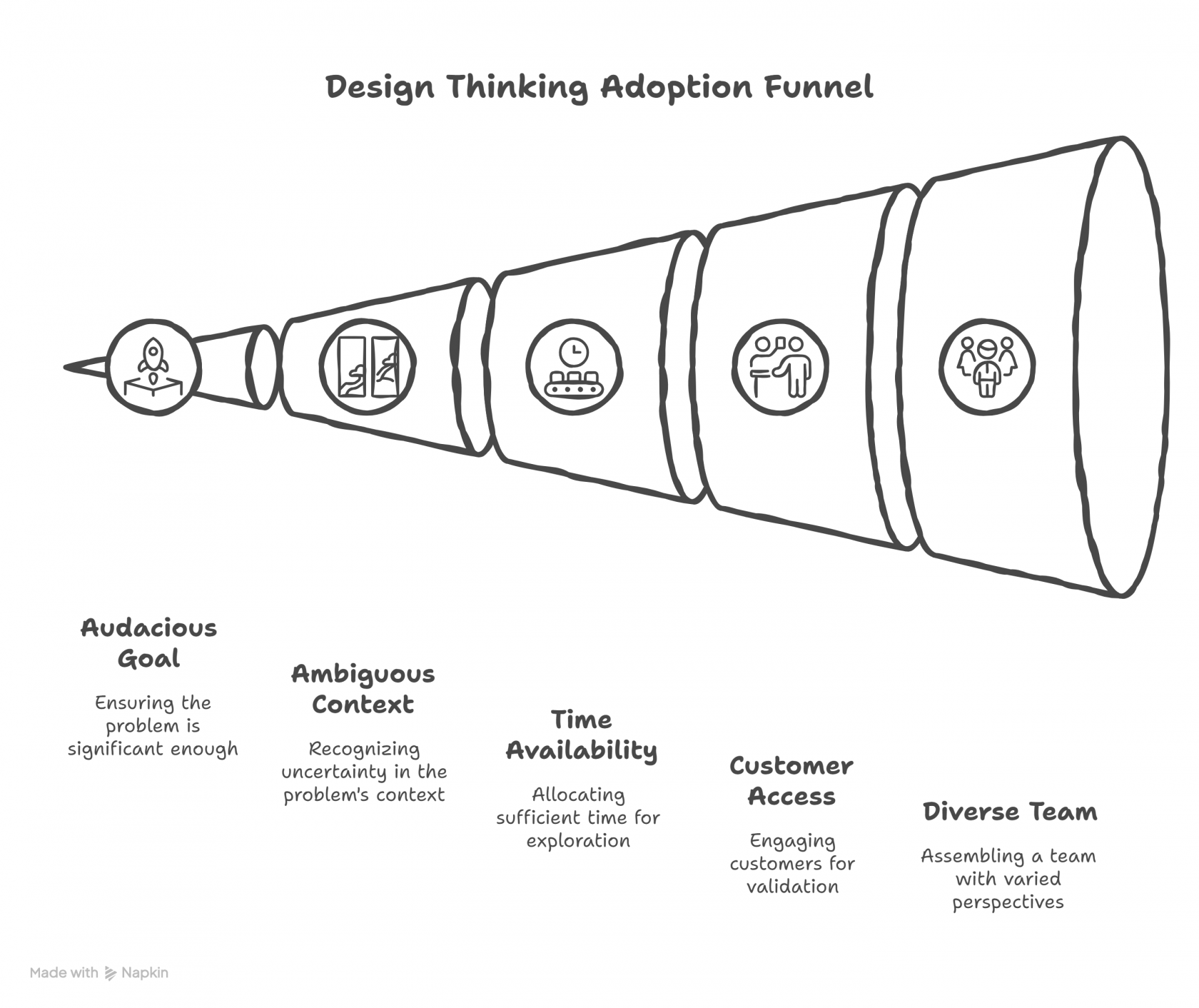When to adopt Design Thinking?
You should not use design thinking as a default method for all problem-solving, as it is a costly and time-consuming process. It's best reserved for specific situations.
Five Conditions to Adopt Design Thinking
- Audacity of Goal: The problem you're trying to solve must be audacious and big enough to justify the investment in design thinking. You shouldn't use it for a simple, mundane problem like needing a hole in a wall. Instead, you should ask a higher-level question like "Why do I need a hole in the wall?". This might reveal the true goal is to have a "beautiful wall," which opens up multiple possibilities beyond a simple drilling task, like using wallpaper or a new paint color. By elevating the problem, you allow the team to think more creatively and open up possibilities.
- Ambiguity of Context: Design thinking is suitable for contexts where there is a lack of clarity and uncertainty. It is a "front-loaded" process that requires significant effort in the early stages to sift through the haze and find a gem of a solution. A good example is trying to solve the problem of why people in smaller towns don't wear seat belts; the context is ambiguous, and you need to understand the underlying attitudes and behaviors to find a solution.
- Availability of Time: Design thinking requires ample time to explore multiple possibilities and allow ideas to mature. Without enough time, people will settle for the first, most obvious ideas, leading to the same tried-and-tested solutions. It provides the luxury of having false starts and dead ends, which is crucial for creativity.
- Access to Customers: Unlike other problem-solving methods where you work in isolation, design thinking requires constant collaboration and validation with the customer at every stage. This ensures there are no surprises in the final outcome, as you're validating each step along the way. The customer is involved in telling the problem, validating it, and even giving ideas.
- Diversity of Team: A diverse team is essential for design thinking. This includes not just gender but also temperamental, generational, educational, and perspective diversity. While a diverse team may take longer to reach a consensus, it allows for a wider range of voices and alternate possibilities to be considered.
The Three Conditions for a Winning Idea
A successful idea that warrants the use of design thinking must satisfy three conditions simultaneously. The overlap of these three circles is the "sweet spot" for a winning idea.
- Human Desirability: The solution must be desirable to the human users, including customers, employees, or suppliers. This is about understanding not just their stated needs but also their unarticulated desires.
- Technical Feasibility: The solution must be technically possible to deliver within a given time and budget. It's a reality check to ensure you're not promising something you can't build.
- Business Viability: The solution must make business sense by helping the company save or make money. Many startups fail because they focus on human desirability and technical feasibility but neglect business viability. For example, quick delivery services might be desirable and feasible but may not be profitable.

